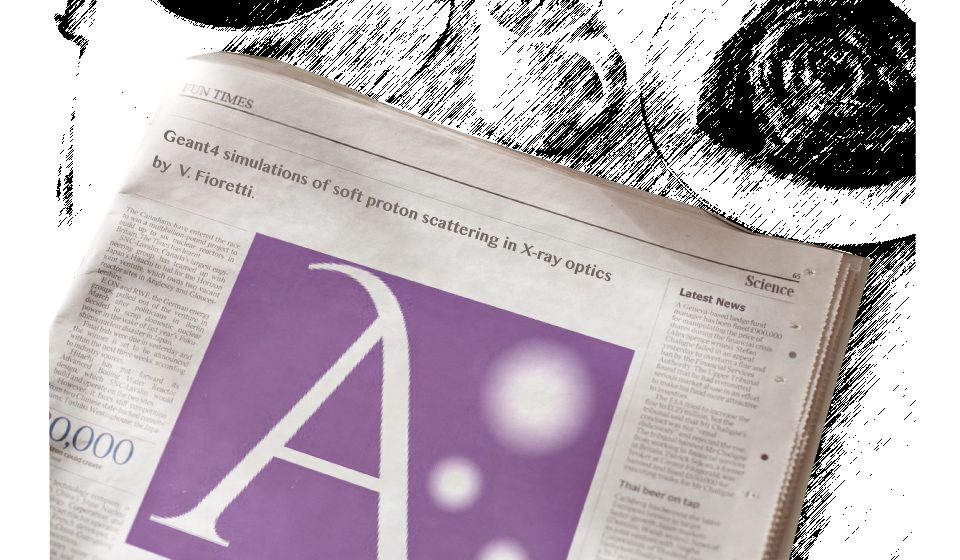
Geant4 simulations of soft proton scattering...

By V. Fioretti
Abstract: "Low energy protons (< 300 keV) can enter the field of view of X-ray telescopes, scatter on their mirror surfaces at small incident angles, and deposit energy on the detector. This phenomenon can cause intense background flares at the focal plane decreasing the mission observing time (e.g. the XMM-Newton mission) or in the most extreme cases, damaging the X-ray detector. A correct modelization of the physics process responsible for the grazing angle scattering processes is mandatory to evaluate the impact of such events on the performance (e.g. observation time, sensitivity) of future X-ray telescopes as the ESA Athena mission. The Remizovich model describes particles reflected by solids at glancing angles in terms of the Boltzmann transport equation using the diffuse approximation and the model of continuous slowing down in energy. For the first time this solution, in the approximation of no energy losses, is implemented, verified, and qualitatively validated on top of the Geant4 release 10.2, with the possibility to add a constant energy loss to each interaction. This implementation is verified by comparing the simulated proton distribution to both the theoretical probability distribution and with independent ray-tracing simulations. Both the new scattering physics and the Coulomb scattering already built in the official Geant4 distribution are used to reproduce the latest experimental results on grazing angle proton scattering. At 250 keV multiple scattering delivers large proton angles and it is not consistent with the observation. Among the tested models, the single scattering seems to better reproduce the scattering efficiency at the three energies but energy loss obtained at small scattering angles is significantly lower than the experimental values. In general, the energy losses obtained in the experiment are higher than what obtained by the simulation. The experimental data are not completely representative of the soft proton scattering experienced by current X-ray telescopes because of the lack of measurements at low energies (< 200 keV) and small reflection angles, so we are not able to address any of the tested models as the one that can certainly reproduce the scattering behavior of low energy protons expected for the Athena mission. We can, however, discard multiple scattering as the model able to reproduce soft proton funnelling, and affirm that Coulomb single scattering can represent, until further measurements at lower energies are available, the best approximation of the proton scattered angular distribution at the exit of X-ray optics."

